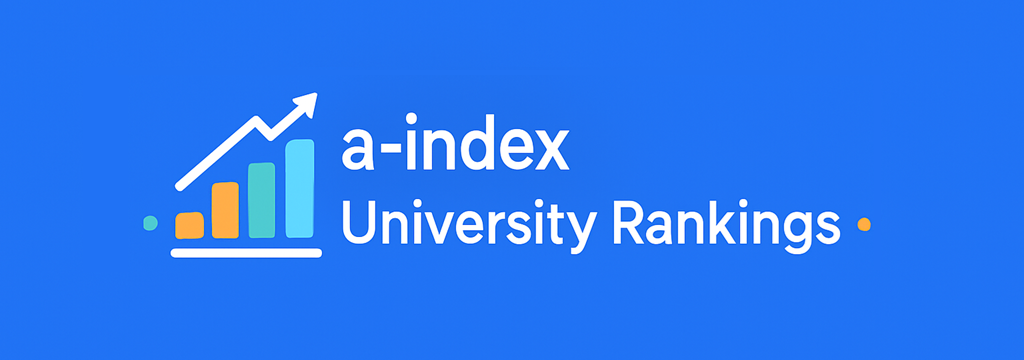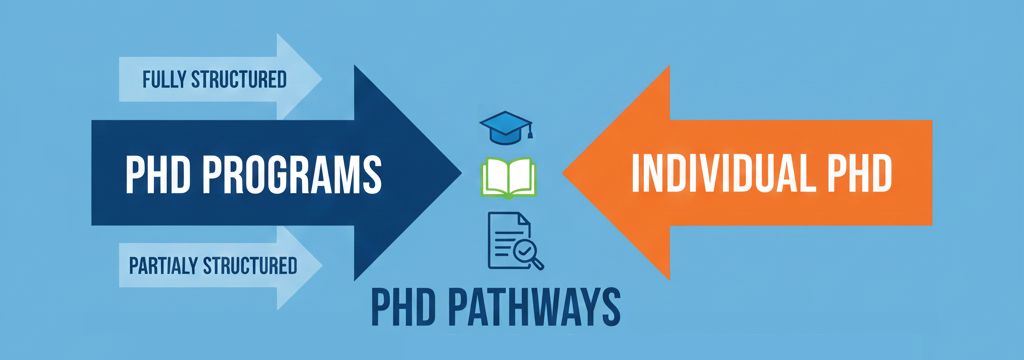
Welcome to a-index University Rankings, a groundbreaking paradigm in university rankings. Applyindex proudly introduces a novel system for globally ranking universities based on their a-index values. Launched in mid-2024, our a-index Global Rankings offer a unique perspective by focusing on the challenges of securing PhD positions with full funding. Unlike traditional rankings from QS top universities, THE, US News, and ARWU, the a-index University Rankings system emphasizes the competitiveness and toughness of the application process to secure positions with higher fully funded PhD chances. It is currently not designed for undergraduate, master’s, or professional doctorate positions, such as EdS, EdD, DBA, DHSc, EngD, DNP, and DrPH.
What Does a University’s a-index Mean?
The a-index derives from both our brand “Applyindex” and concept of “Admission index”, it is written as a-index, rather than aindex, A-index, Aindex, A-Index, or AIndex, to prevent confusion with “ai, Ai, or AI (artificial intelligence)”. It is a comprehensive metric, calculated using a systematic methodology, that ranges from 50 to 90 for universities. A higher value reflects a more competitive and rigorous admission process for securing PhD positions with higher funded PhD chances. It is essential to note that the a-index of universities and research institutes is currently calculated only for PhD level, not professional doctorate, master’s, or undergraduate positions.
Methodology for a-index Calculations
This sophisticated index, i.e., the foundation of the a-index University Rankings, is derived through a systematic methodology from the amalgamation of fifteen factors (including ten direct and five indirect factors), each carefully selected to reflect the strictness of securing fully funded PhD positions at universities. The ten key factors are:
- The total citation count of universities and institutions.
- The h-index and i10-index of universities and institutions.
- Their acceptance rate (%) with full financial support (tuition waiver + monthly stipend) at the graduate and postgraduate levels.
- Their minimum entry requirements for PhD applicants (e.g., GPA, language proficiency), set by their Graduate Office.
- Their annual number of scientific publications (e.g., original research papers, review articles, communications).
- Their faculty-to-PhD-candidate ratio.
- The number and value of research grants awarded to their academic staff members.
- The average h-index and i10-index of their academic staff members.
- Their rankings in the popular prestige-based systems, such as QS top universities, THE, US News, ARWU, and others.
- The availability of teaching assistant positions for commencing PhD students.
a-index Formula Optimization and Updates
Please be aware that the a-index value of universities is continuously evolving, and the calculation methodology, number, or type of criteria used in its calculation may change over time. For instance, as we gather more data from universities and research entities, factors with minimal impact may be removed from the a-index formula of universities, research institutes, research centers, and research schools. Conversely, new influential parameters may be introduced to enhance its accuracy and relevance. In short, the optimization process is ongoing (perhaps eternal!), and the rankings are updated each July for the current year.
Various a-index Rankings
The a-index Rankings system has launched its initial framework through the a-index Global University Rankings (i.e., university segment only). This global university system is currently organized into a-index University Rankings by Region, and will soon expand to include a-index University Rankings by Country and a-index University Rankings by Field under the Global University Rankings category. In the following phases, the system will grow to encompass two additional major categories: a-index Institution Rankings (i.e., covers research institutes, research centers, research schools, and hospitals) and a-index Global Rankings (universities + institutions + hospitals + industries ). These categories will include:
- a-index Global Institution Rankings
- a-index Institution Rankings by Region
- a-index Institution Rankings by Country
- a-index Institution Rankings by Field
- a-index Global Rankings
- a-index Rankings by Region
- a-index Rankings by Country
- a-index Rankings by Field
a-index University Rankings
Universities are ranked based on their a-index values; the higher the a-index, the higher their rank, and the more competitive they are in offering full financial aid. A higher rank indicates a more challenging process to find a PhD with full funding. Join us on this revolutionary journey as we redefine the landscape of university rankings with the a-index, i.e., an innovative tool designed to empower PhD applicants to make informed decisions. Illustrating the power of the a-index, ETH Zurich emerges as a beacon of academic rigor, boasting an impressive a-index of 90. This signifies that ETH Zurich sets the benchmark for the most challenging PhD admission processes, making it a university that demands excellence and commitment from its aspirants.
Which Countries Are Covered in a-index University Rankings?
The a-index University Rankings system currently covers over 750 universities across 28 countries. Sixteen countries are developed countries, including the USA, the UK, Australia, Canada, Germany, and France, that are especially popular among international students from developing countries, including Nigeria, Pakistan, Iran, and many others. The a-index University Rankings span five continents: Africa, Asia, Europe, North America, and Australia (Oceania). Countries covered by the a-index University Rankings are South Africa, Israel, China, Hong Kong, India, Japan, Malaysia, Singapore, South Korea, Taiwan, Austria, Belgium, Denmark, Finland, France, Germany, Ireland, Italy, the Netherlands, Spain, Sweden, Norway, Switzerland, the UK, the USA, Canada, Australia, and New Zealand.
Countries in Africa and the Middle East
Countries in Asia
Countries in Europe
Countries in North America and Oceania
How Should Students Use a-index University Rankings?
The a-index University Rankings system is another useful Applyindex tool designed for applicants seeking fully funded positions (both structured PhD programs and individual PhDs). Apart from the universities’ a-index, Applyindex’s data-driven algorithms evaluate PhD applicants’ CV strength by assigning an a-index to it (a score between 50 and 100). This score is determined by 15+ factors derived from the PhD applicant’s CV credentials. A higher a-index indicates a greater likelihood of funded PhD chances. After calculating the CV’s a-index, they can see their chances of securing fully funded positions on the PhD full funding chances page once logged in. We strongly recommend that PhD applicants focus on universities with a chance of at least a 60% acceptance rate.
a-index University Rankings vs QS/THE/US News/ARWU/AD
While the QS, THE, ARWU, US News, and the AD Scientific Index World University Rankings emphasize factors such as Nobel laureates, campus size, employer reputation, employment outcomes, h-index, i10-index, citations, and sustainability, the a-index University Rankings methodology takes a different approach. Our system focuses on helping PhD applicants estimate their funded PhD chances by comparing the a-index of students with the a-index of universities. The factors used in this new ranking methodology are directly relevant to the PhD application process, rather than the broad, institution-level metrics traditionally used in global ranking systems.
Conclusion
The a-index University Rankings represent a bold step toward redefining how aspiring PhD applicants evaluate universities and research institutions worldwide. By shifting the focus from prestige-based metrics to the true competitiveness of securing fully funded PhD positions, the a-index empowers students with clearer, data-driven insights. As the system evolves (expanding into regional, field-based, and research institution-wide rankings), it will continue to offer greater transparency and relevance for the global research community. With annual updates and continuous optimization, the a-index stands as a modern, dynamic benchmark for academic rigor. Ultimately, our mission is to guide applicants toward opportunities that align with their academic strengths, ambitions, and funding goals.
Frequently Asked Questions (FAQs)
What is the a-index value of universities, and how is it calculated?
The a-index is a comprehensive metric, calculated via a systematic methodology, ranging from 50 to 90, that assesses the competitiveness of universities, particularly concerning the difficulty of securing PhD positions (not professional doctoral positions) with PhD-funded chances. It is derived from nine key factors.
What is the a-index value of students’ CVs, and how is it calculated?
The a-index assigned to a PhD applicant’s CV measures how competitive their CV is for funded PhD chances at a university or a research institution, based on 15+ data-driven factors.
How reliable is the a-index University Rankings system?
The a-index is a highly reliable ranking system, built on a robust, big data-driven formula. By analyzing vast datasets, the a-index provides an accurate, data-backed reflection of institutional strictness and competitiveness.
Is the a-index the same as AI or artificial intelligence?
No. The name comes from Applyindex and “Admission index,” and is written as a-index to avoid confusion with “AI”.
Is the a-index University Rankings system updated regularly?
Yes, the a-index is continuously evolving. All a-index rankings are updated every July, and the formula may evolve as more data becomes available. The factors and their weightings in the calculation may be refined over time to enhance accuracy and relevance, ensuring that the rankings reflect the current academic landscape.
Are master’s or undergraduate programs included in the a-index?
Not yet. The a-index currently evaluates only PhD-level competitiveness, not bachelor’s, master’s, or professional doctorate programs.
How should I use the a-index for my PhD applications?
Use it to identify universities where your CV’s a-index gives you at least a 60% chance of securing full funding, helping you prioritize realistic and competitive options.
What makes the a-index University Rankings different from QS or THE rankings?
Unlike traditional rankings, the a-index focuses specifically on how competitive it is to secure fully funded PhD positions, not overall institutional prestige.
























Leave Your Comment